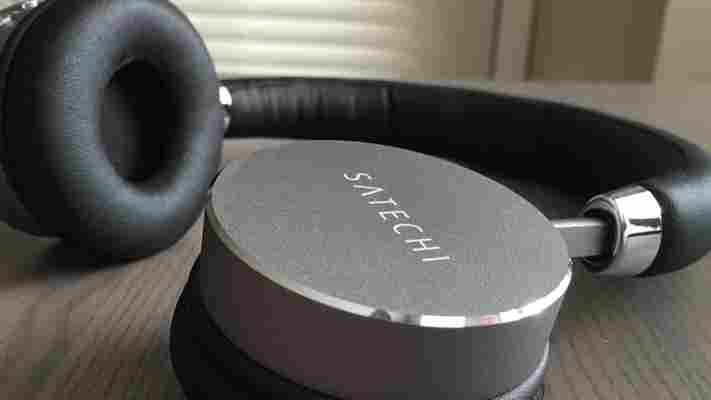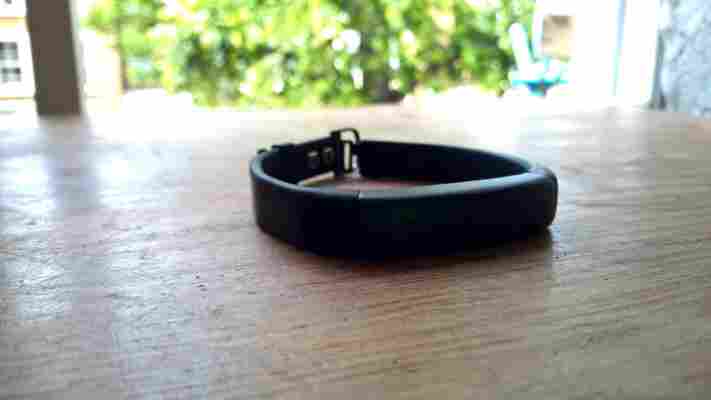Huawei’s MateBook is a $699 cross between the Surface and iPad Pro
Huawei’s new MateBook is probably the closest we’ll get to an iPad Pro running Windows 10, and it actually looks pretty sweet.

Spec-wise, the 12-inc, 2-in-1 tablet is actually most reminiscent of Samsung’s TabPro S (which I quite liked ). It’s ridiculously thin (6.9mm) and weight just 1.41 pounds without the keyboard. That’s thinner than an iPhone 6S.
At its base $699 price (which doesn’t include the keyboard or stylus), the tablets comes with 4 GB of RAM, 128 GB of storage, and a Core M3 processor. The screen is a comparable 2160 x 1440 resolution (much less than the Surface Pro 4 or 12-inch iPad pro, but enough).
Huawei outdoes Samsung, however, by offering a few higher end configurations with 8GB of RAM, a core m5 processor, and up to 512 GB of storage for $1,199. I suspect the $999 Core m5, 8 GB RAM, and 256 GB storage option will end up being the most popular option aside from the base model. You’ll then have to factor in $129 for the portfolio keyboard – which, to be fair, looks seriously classy -, and $59 for the stylus.
All configurations come with a Windows Hello compatible fingerprint reader on the tablet itself – a nice touch – as well as a Micro USB and USB-A adapter for the single USB-C port. There’s also a leather-bound dock with a couple of USB 3.0 ports, Ethernet, HDMI and VGA ports for $89.
Like the TabPro S, the MateBook is not meant to be quite as powerful as the Surface Pro line, but given it comes with Windows 10 Signature Edition – AKA, no bloatware – it should be fine for everyday use. Here’s to hoping that 9-hour battery life claim holds up in the long run.
The tablet goes on sale in the US on July 11, but you can pre-order one now.
Review: Satechi’s Aluminum Headphones may be just the thing your new iPhone 7 will need
Your next iPhone probably won’t may not have a 3.5mm headphone jack. Finding new earbuds or headphones may be necessary at that point, and Satechi thinks its new over-ear cans can satisfy you.

But will they?
Satechi is using anodized aluminum that mimics Apple’s own product line (except Rose Gold). The earphones also fold flat for slipping into a bag, and have a comfortable padding for both your ears and top of the head.
On one side, there are three buttons, each with multiple functionality. The Bluetooth button is also the power button, and pulls triple-duty as a pause button. The volume rockers work when held down; if you single-tap either, it skips the track forward or backward one spot on your playlist.
Satechi’s headphones also have a mic so you can take calls, and come with a 3.5mm audio cable (with a mute button) if you’d prefer a wired experience.
There is an optional stand for your desk that doubles as a USB hub. It’s also aluminum, and available in the same colors as the headphones.
For a basic user, Satechi’s headphones are great. They don’t deliver a ton of bass, and the treble is accurate but not crisp. The sound is accurate, but I can’t endorse Satechi’s ‘premium sound’ claim (that’s something Bose can say with ease).
But they do respond well to software tweaks. In the Settings app on your iPhone — buried under ‘Music’ — there’s an EQ. Toying with settings there made the headphones sound a lot better (compared to other headphpones and earbuds I’ve also exposed to Apple’s EQ) depending on what type of music I was listening to.
Still, I wasn’t wowed. I’m no audiophile in any way, but it’s clear these aren’t the best headphones you can get. They’re really good, just not great.
Satechi’s headphones have Bluetooth 4.0, and the battery life is really good (I got through days of light use without being notified I should charge them; Satechi says you’ll get around 16 hours use before needing to charge). They fold flat, have a nice stand for the desk, and can be wired if you need it.
They’re also $69.99.
Again, these are nowhere near the best cans I’ve had on my ears, but they’re far from the worst — and may be among the most comfortable on-ear headphones I’ve used (and I typically hate on-ear headphones). Unless you want to spend upwards of $200, Satechi’s headphones get the job done just fine.
For the price, it’s hard to argue against the Satechi Aluminum Wireless Headphones. Especially as Apple appears to be moving away from wired audio, Satechi’s aluminum headphones are worth a look.
Jawbone may be getting out of the wearables business, and it’s probably for the best
Jawbone may finally be doing the smart thing and getting rid of its hardware business. According to a report from Tech Insider , the company has sold off all of its wearable inventory.

It’s not been confirmed (and we’ve reached out to Jawbone for comment), but Jawbone has apparently sold off all of its existing Up wearable inventory to a third-party reseller, and is shopping its speaker business around as well.
Selling its wearable hardware off was a measure to keep the business alive, according to Tech Insider. It’s not known if the move was also a precursor for new wearables, or if Jawbone is simply exiting the tough wearable hardware business it never quite cracked.
Fitbit reigns supreme in non-smartwatch wearables, and Apple Watch has a strong position in the smartwatch category. Fan-favorite Pebble is also getting into the fitness tracking game.
Though Jawbone was ahead of the curve on wearables, reviews were consistently mixed . The newest Up wearables slipped off easily, and the precursor to it was a weird wrap-around band that put many off.
Jawbone’s CEO Hosain Rahman has always said the data gleaned from wearables was more important to the company than hardware. If it’s really getting out of the hardware game, perhaps it has deals in place with other wearable manufacturers to use its software or app.
As for its speaker business, Jawbone is also trying to sell of inventory. A recent report suggests Jawbone is actively seeking a buyer for that branch of its business.
The rub there is that Fortune indicates the speaker sell-off was made so Jawbone can focus on its “health and wearables” business — which Tech Insider indicates may also be in jeopardy. Sadly, people really seemed to like Jawbone’s speakers, but increased competition made them an expensive gadget rather than a cool must-have.
